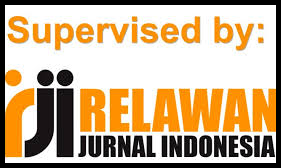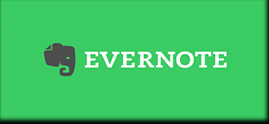Implementation of Circular Economy Model in Textile Industry in Purwakarta: Innovative Strategy Towards Sustainable Production
DOI:
https://doi.org/10.22437/jalow.v8i1.44072Keywords:
Circular Economy, ;Textile Industry, SustainabilityAbstract
This Study Aims to examine the implementation of the circular economy model in textile industry in Purwakarta Regency, West Java. Using a qualitative approach and case studies from some textile companies. The research explores the application of waste reduction (reduce), Reuse and Recycling with production operations. Data were collected through in depth interviews, field observations, and documentation, and analyzed using the miles and Huberman interactive analysis model. The findings indicate that circular economy practices have been partially implemented, particularly in water efficienscy, waste management, and fabric residue processing. However, implementation still faces challenge such as limited technology, low internal awareness, and suboptimal support from local government policies. The study recommends a synergetic collaboration between industry players, government, and academia to foster a sustainable circular economy ecosystem in the textile sector
Downloads
References
[1] de Oliveira Neto GC, Correia JMF, Tucci HNP, Librantz A F H., Giannetti B F, Almeida C M V B. (2022) Sustainable resilience degree assessment of the textile industrial by size: incremental change in cleaner production practices considering circular economy. J Clean Prod 2022; 380: 134633.
[2] De Paoli, A.(2015). Towards the circular economy: Identifying local and regional government policies for developing a circular economy in the fashion and textiles sector in Vancouver, Canada; Vancouver Economic Commission.
[3] Ellen MacArthur Foundation. (2019). Completing the picture: How the circular economy tackles climate change. Ellen MacArthur Foundation
[4] Hultberg E, Pal R.(2021) Lessons on business model scalability for circular economy in the fashion retail value chain: towards a conceptual model. Sustain Prod Consumption 2021; 28: 686–698
[5] Kirchherr, Julian.,(2021). Circular economy and growth: a critical review of “postgrowth” circularity and a plea for a circular economy that grows. Resour. Conserv. Recycl., 106033 https://doi.org/10.1016/J.RESCONREC.2021.106033.
[6] Koszewska M. (2018). Circular Economy – Challenges for the textile and clothing industry.AUTEX Research Journal. Vol 18 No 4
[7] MacArthur E. Towards the circular economy: economic and business rationale for an accelerated transition. J Ind Ecol 2013; 2(1): 23–44.
[8] Mitchell P.(2015). Employment and the circular economy - Job creation through resource efficiency in London. Report produced by WRAP for the London Sustainable Development Commission, the London Waste and Recycling Board and the Greater London Authority, 2015. Banbury: Wrap.
[9] Neto GCDO, Tucci HNP, Correia JMF, et al (2021). Stakeholders’ influences on the adoption of cleaner production practices: a survey of the textile industry. Sustain Prod Consumption 2021; 26: 126–145.
[10] Nobre, G.C., Tavares, E.,(2021). The quest for a circular economy final definition: a scientific perspective. J. Clean. Prod. 314, 127973 https://doi.org/10.1016/J. JCLEPRO.2021.127973
[11] Oprak T, Anis P.(2017) Textile industry’s environmental effects and approaching cleaner production and sustainability, an overview. J Fashion Technol Textil Eng; 2(4): 429–442.
[12] Preston F. A global redesign? Shaping the circular economy. Energy, Environment and Resource Governance, 2012, p.20.
[13] Rahmawati, D., & Yusuf, A. (2021). Strategi implementasi circular economy pada UMKM tekstil: Studi kasus di Bandung. Jurnal Ekonomi Lingkungan, 9(1), 35–44
[14] Rahmawati., Wahyuningsih, S., Amperawati, E. D., Noviani, R., Arifah, S., Junaidi, A, Nurlaela. S. (2024). Optimalisasi Batik Solo Eco Print Melalui Peningkatan Kualitas Produksi, manajemen dan pemasaran. Jurnal Abdimas Berdaya. Vol 7 No.1
[15] Repp, L., Hekkert, M., Kirchherr, J., (2021). Circular economy-induced global employment shifts in apparel value chains: Job reduction in apparel production activities, job growth in reuse and recycling activities. Resour. Conserv. Recycl. 171, 105621 https://doi.org/10.1016/J.RESCONREC.2021.105621.
[16] Sari, M. A., Prabowo, H., & Indrawan, T. (2022). Peran kebijakan daerah dalam mendukung industri berkelanjutan di Jawa Barat. Jurnal Kebijakan Publik dan Lingkungan, 6(2), 21–30.
[17] Siderius T, Poldner K.(2021). Reconsidering the circular economy rebound effect: propositions from a case study of the Dutch Circular Textile Valley. J Clean Prod 2021; 293: 125996.
[18] Simanjuntak, R., Dewi, N. K., & Fadilah, R. (2020). Kesiapan industri tekstil terhadap transisi ekonomi sirkular di Jawa Barat. Jurnal Teknik Industri, 18(3), 101–112.
[19] Wahyudin, D. (2016). Strategi Konsep Ekonomi Hijau sebagai Sustainable Development Goals di Indonesia. Prosiding Seminar STIAMI, 3(1), 34–45.
[20] Wulandari IGAA, (2019). Problematika UMKM Berbasis Budaya Lokal di Bali (Studi Kasus Pemasaran Produk UMKM Berbasis Budaya Lokal di Pesta Kesenian Bali. Jurnal Ekonomi dan Bisnin Vol.6 No.2.101-120

Downloads
Published
How to Cite
Issue
Section
License
Copyright (c) 2025 M. Amirul Ghiffari, Rian Christian Sondakh, Ma'ruf Pambudi Nurwantara

This work is licensed under a Creative Commons Attribution 4.0 International License.











